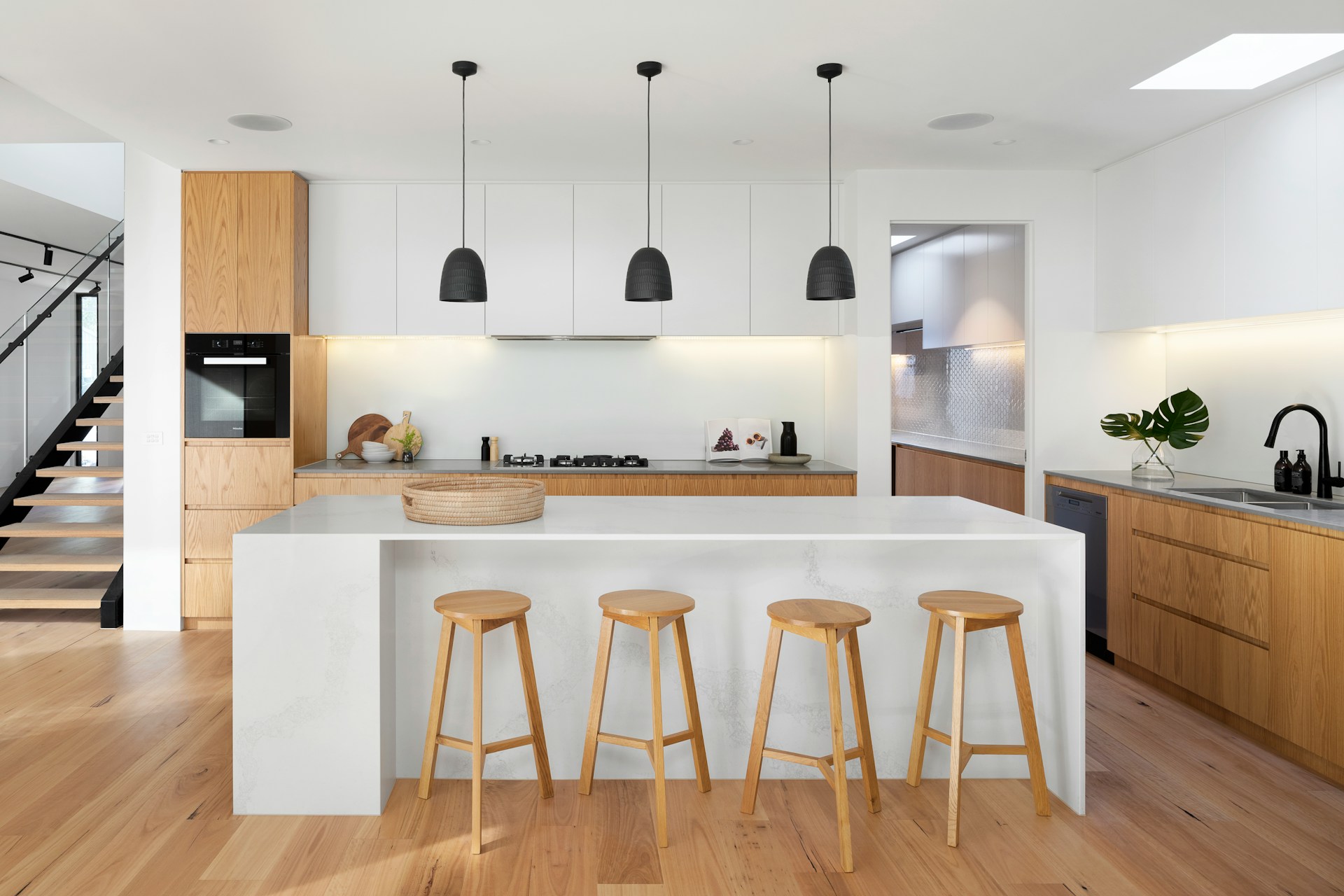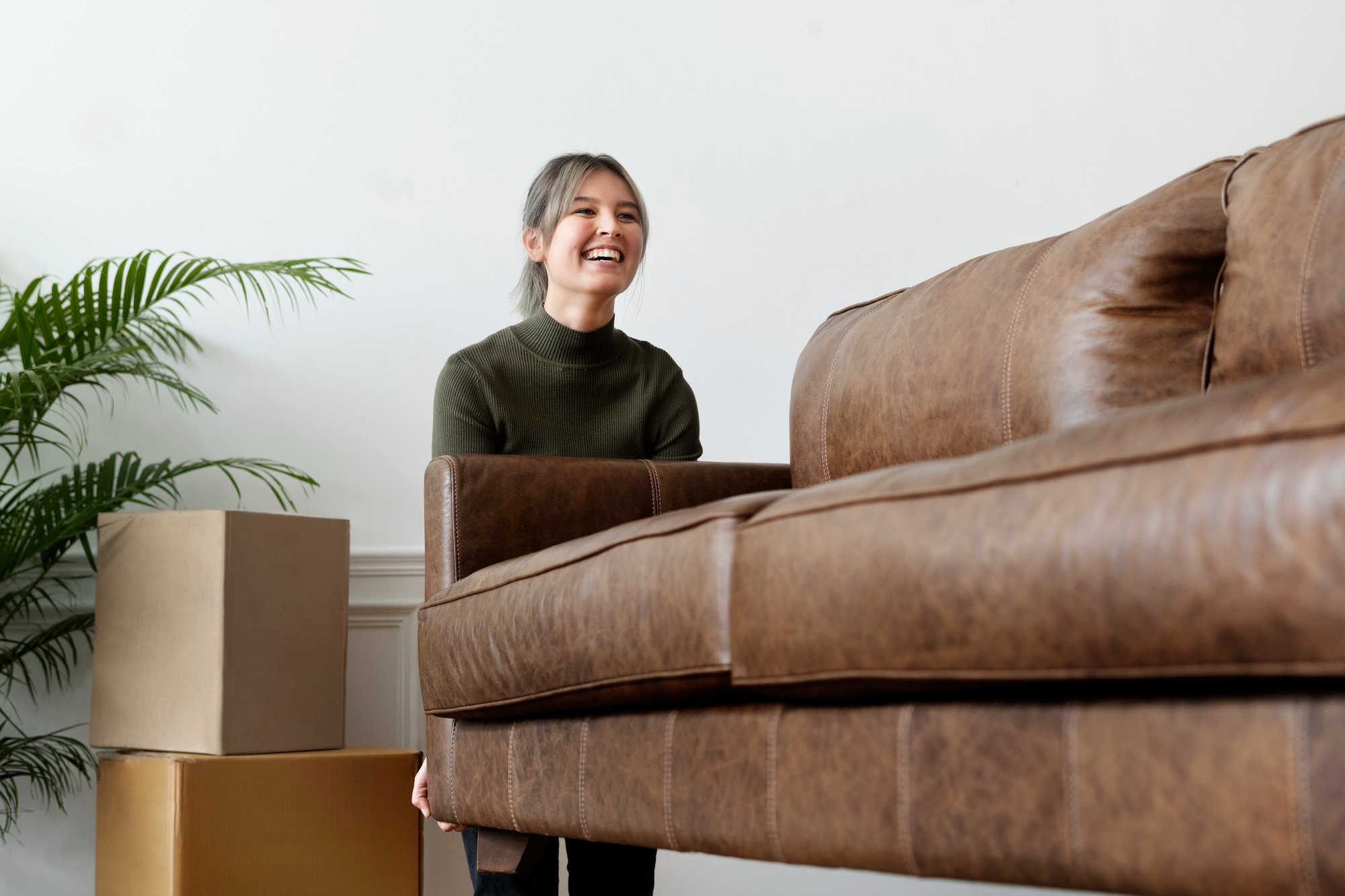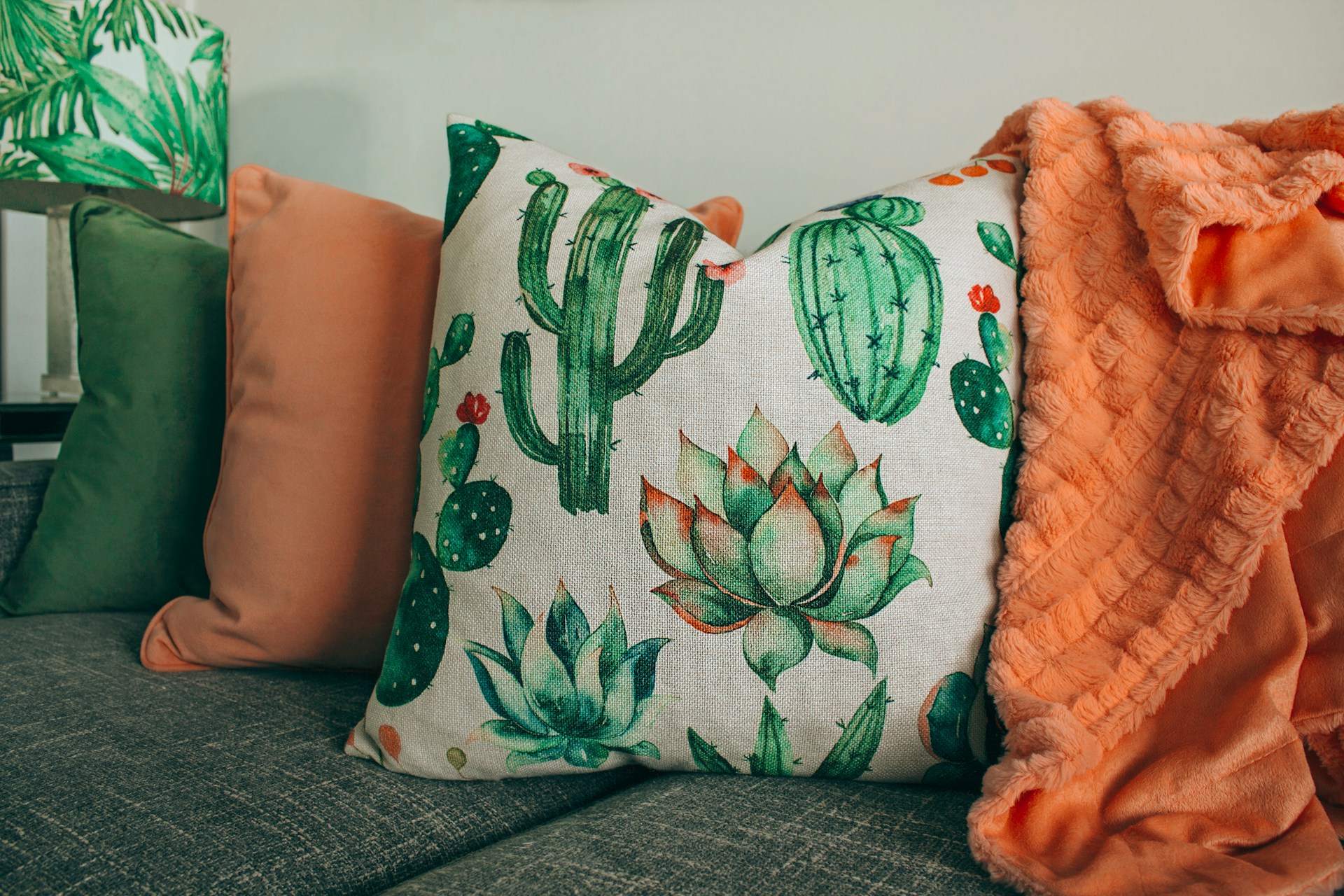Are you ready to transform your home into a sanctuary of tranquility and style? If so, let’s dive into the world of Organic Modern Interior Design. This design trend beautifully blends the clean, sleek lines of modern design with the warm, inviting elements of organic materials and nature-inspired aesthetics. Not only is it visually stunning, but it also promotes a healthy, sustainable lifestyle.
What is Organic Modern Interior Design
Organic Modern Interior Design is a captivating blend of minimalism and natural elements. It merges the sleek, functional lines of modern design with the warmth and texture of organic materials. This style emphasizes simplicity, functionality, and a connection to nature. Picture a room with clean, uncluttered surfaces, soft neutral colors, and an abundance of natural light. Add to this a mix of wood, stone, and indoor plants, and you get a space that feels both elegant and welcoming.
This design approach is all about balance. It seeks to create harmony between the built environment and the natural world. Instead of relying on synthetic materials and bold, artificial colors, organic modern design uses natural textures and earthy tones. Wood, stone, and metal are used not just for their aesthetic appeal but also for their ability to bring a sense of nature indoors. The result is a space that is not only visually appealing but also promotes a sense of peace and well-being.
Moreover, organic modern design is versatile and timeless. It can be adapted to various types of spaces, from small apartments to large homes. The key is to focus on quality over quantity, choosing pieces that are both beautiful and functional. This design philosophy encourages the use of sustainable and eco-friendly materials, aligning with a growing awareness of environmental issues. In essence, organic modern design offers a perfect blend of style, comfort, and sustainability.
The Popularity of Organic Modern Style
The popularity of Organic Modern Style has surged in recent years, driven by a growing desire for homes that offer a sanctuary from the hectic, technology-driven world. As people become more aware of the importance of mental and physical well-being, they seek environments that promote tranquility and a sense of connection to nature. Organic modern design provides just that – a stylish, serene escape that feels timeless and grounded.
One of the main reasons for this style’s appeal is its ability to create a calming atmosphere. In a world filled with constant noise and distractions, having a home that feels like a peaceful retreat is invaluable. The use of natural materials and neutral colors helps to create a soothing environment, while the minimalist approach ensures that spaces remain uncluttered and free of unnecessary distractions. This simplicity is not just aesthetically pleasing but also psychologically beneficial, helping to reduce stress and improve overall well-being.
Additionally, the emphasis on sustainability and eco-friendliness resonates with modern values. Many people are increasingly concerned about the impact of their lifestyle choices on the environment. Organic modern design, with its focus on natural and sustainable materials, offers a way to create beautiful spaces that are also environmentally responsible. This alignment with eco-conscious living makes the organic modern style not just a design choice but a lifestyle statement.
Elements of Organic Modern Interior Design
Natural Materials
At the core of Organic Modern Interior Design are the natural materials that define its aesthetic. These materials include wood, stone, metal, and natural fabrics like cotton and linen. Each of these elements brings a unique texture and warmth to a space, creating a sense of grounding and connection to the earth. Wood, for instance, can be used in furniture, flooring, and wall accents, providing a versatile and timeless appeal. Stone can be incorporated in countertops, fireplaces, and decorative elements, adding a rugged, earthy feel.
Using natural materials also means embracing their imperfections. The organic design doesn’t shy away from the knots in wood or the variations in stone; instead, it celebrates these imperfections as part of the natural beauty. This approach helps to create spaces that feel authentic and lived-in, rather than overly polished or artificial. Natural fabrics like cotton and linen are preferred for upholstery and bedding because they are breathable, durable, and contribute to the overall organic feel of the design.
- Wood: Floors, furniture, wall accents
- Stone: Countertops, fireplaces, decorative elements
- Metal: Light fixtures, hardware, accents
- Natural fabrics: Cotton, linen for upholstery and bedding
Earthy Color Palette
The Earthy Color Palette is another defining characteristic of organic modern design. These colors are inspired by nature and include shades like beige, brown, green, and soft whites. These hues create a calming and serene environment, serving as a perfect backdrop for the natural materials and indoor plants that are central to this design style. Beige and white can be used on walls to keep spaces light and airy, while brown and green can be introduced through furniture, decor, and plants.
The key to using an earthy color palette effectively is balance. Too many dark or bold colors can overwhelm a space, while too many light colors can make it feel cold or sterile. The goal is to create a harmonious blend that enhances the natural beauty of the materials and creates a cohesive look. Accent colors can also be used sparingly to add interest and depth to the design without detracting from its overall simplicity and calmness.
- Base colors: Beige, white for walls and large surfaces
- Accent colors: Brown, green through furniture and decor
- Balance: Harmonious blend to enhance natural beauty
Minimalism
Minimalism is a fundamental principle of organic modern design. This approach emphasizes simplicity and functionality, avoiding unnecessary clutter and focusing on essential pieces that add value to the space. The idea is to create open, airy environments that are easy to live in and maintain. Clean lines and simple forms are preferred, ensuring that every item serves a purpose and contributes to the overall aesthetic.
In practice, minimalism means carefully selecting furniture and decor that align with the organic modern style. Instead of filling a room with numerous pieces, the focus is on choosing a few high-quality items that make a statement. This might include a well-crafted wooden table, a comfortable linen sofa, or a unique stone accent piece. The minimalist approach also extends to decor and accessories, where less is more. The goal is to create spaces that feel spacious and uncluttered, promoting a sense of calm and order.
- Furniture: Few high-quality pieces with clean lines
- Decor: Minimalist approach with selective, purposeful items
- Space: Open, airy environments with a focus on simplicity
Indoor Plants
Indoor Plants play a crucial role in organic modern design, serving both aesthetic and functional purposes. They enhance the visual appeal of a space, adding color, texture, and a sense of life. Plants also improve indoor air quality by absorbing toxins and releasing oxygen, contributing to a healthier living environment. From large potted plants to small succulents, there are endless options to incorporate greenery into your home.
Choosing the right plants is important. Consider factors like the amount of natural light a room receives, the size of the space, and the level of care each plant requires. Large plants like fiddle leaf figs or monstera can make a bold statement in living rooms or entryways, while smaller plants like succulents or snake plants are perfect for desks and shelves. Hanging plants and vertical gardens are also great options for adding greenery without taking up floor space.
- Large plants: Fiddle leaf fig, monstera for bold statements
- Small plants: Succulents, snake plants for desks and shelves
- Vertical options: Hanging plants, vertical gardens for limited space
Benefits of Organic Modern Interior Design
| Benefit | Description | Examples |
| Promotes a Healthy Environment | Uses natural materials and plants to improve air quality, free from harmful chemicals. | Wood, stone, indoor plants |
| Enhances Mental Well-being | Creates a clutter-free, nature-inspired home that reduces stress and enhances mental peace. | Minimalist design, natural elements |
| Sustainability and Eco-friendliness | Emphasizes eco-friendly materials and practices, using recycled wood and energy-efficient appliances to reduce environmental impact. | Recycled materials, energy-efficient lighting |
Promotes a Healthy Environment
One of the significant benefits of Organic Modern Interior Design is that it promotes a healthy living environment. This design style prioritizes the use of natural materials such as wood, stone, and metal, which are free from harmful chemicals commonly found in synthetic materials. These natural materials do not emit volatile organic compounds (VOCs) that can cause indoor air pollution and negatively impact health. By choosing materials that are natural and non-toxic, you can improve the air quality in your home, making it a healthier place to live.
In addition to natural materials, indoor plants play a crucial role in enhancing indoor air quality. Plants act as natural air purifiers, absorbing pollutants and releasing oxygen. This helps to create a fresher and more oxygen-rich environment, which can improve respiratory health and overall well-being. Plants also add moisture to the air, which can be particularly beneficial in dry climates or during winter months when indoor air tends to be dry.
Moreover, the design principles of organic modern interiors promote better ventilation and airflow. Open spaces, large windows, and the strategic placement of furniture ensure that air circulates freely throughout the home. This reduces the buildup of dust and allergens, further contributing to a healthier living environment. Overall, organic modern design fosters a space that not only looks beautiful but also supports physical health.
Enhances Mental Well-being
Living in a well-designed space can have a profound impact on mental well-being, and organic modern interior design excels in this regard. A key aspect of this design style is minimalism, which emphasizes clutter-free living. By eliminating unnecessary items and focusing on essential, functional pieces, you create an environment that is calm and orderly. This reduction in visual clutter helps to reduce stress and anxiety, promoting a sense of peace and relaxation.
The connection to nature is another element that enhances mental well-being. Organic modern design incorporates natural elements such as wood, stone, and plants, which have been shown to have a calming effect on the mind. Studies have found that exposure to natural elements can reduce stress, lower blood pressure, and improve mood. By bringing these elements into your home, you create a space that feels serene and grounding.
Additionally, the use of natural light is a hallmark of organic modern interiors. Large windows and open spaces allow ample natural light to flood the rooms, which can boost mood and energy levels. Natural light also helps regulate sleep patterns and supports overall mental health. Together, these elements create a home environment that nurtures mental well-being, making it a sanctuary from the stresses of daily life.
Sustainability and Eco-friendliness
Organic modern interior design is inherently sustainable, making it an excellent choice for eco-conscious homeowners. This design philosophy emphasizes the use of eco-friendly materials and practices, from recycled wood to energy-efficient appliances. By choosing materials that are sustainable and responsibly sourced, you reduce the environmental impact of your home and contribute to a healthier planet.
One way organic modern design promotes sustainability is through the use of recycled and reclaimed materials. For example, reclaimed wood can be used for flooring, furniture, and accent walls, giving new life to materials that would otherwise go to waste. Similarly, recycled metal and glass can be incorporated into various design elements, reducing the need for new raw materials and minimizing waste.
Energy efficiency is another critical aspect of sustainable design. Organic modern interiors often feature energy-efficient appliances and lighting solutions, which help reduce energy consumption and lower utility bills. Additionally, the design emphasizes natural light and ventilation, reducing the need for artificial lighting and heating or cooling systems. By adopting these sustainable practices, you can create a home that is not only beautiful and comfortable but also environmentally responsible.
Key Features of Organic Modern Interiors
| Feature | Description | Examples |
| Open Spaces | Minimizes walls and barriers, creating open, flowing spaces that feel larger and more inviting. | Open-plan living areas, large windows |
| Clean Lines | Emphasizes simplicity and precision with straight, unadorned lines in architecture and furniture. | Geometric furniture, streamlined cabinetry |
| Functional Furniture | Ensures furniture is both beautiful and practical, often with multifunctional uses to enhance space utility. | Storage coffee tables, sofa beds |
Open Spaces
Open Spaces are a hallmark of organic modern interior design, creating a sense of freedom and fluidity throughout the home. This design principle involves minimizing walls and barriers to create open, flowing spaces that feel larger and more inviting. Large, open-plan living areas are typical, with kitchen, dining, and living spaces seamlessly integrated into one expansive area. This openness not only enhances the visual appeal but also improves the functionality of the space, making it more versatile and adaptable to different needs.
The use of large windows and glass doors further enhances the sense of openness by allowing natural light to flood the interior. This not only brightens the space but also creates a visual connection with the outdoors, blurring the line between inside and outside. The influx of natural light makes rooms feel more spacious and airy, contributing to a more uplifting and energizing environment. Additionally, open spaces promote better airflow and ventilation, ensuring a healthier indoor environment.
Incorporating open spaces into your home also encourages a more communal and social atmosphere. Without walls and barriers, family members and guests can interact more freely, making the home feel more welcoming and inclusive. This design principle is especially beneficial in smaller homes, where maximizing space and functionality is crucial. By embracing open spaces, you create a home that feels larger, more connected, and more harmonious.
Clean Lines
Clean Lines are a defining characteristic of organic modern interior design, emphasizing simplicity and precision. This design element focuses on the use of straight, unadorned lines in architecture, furniture, and decor. Clean lines contribute to a minimalist aesthetic, creating a sense of order and clarity in the space. This simplicity is not only visually appealing but also functional, making it easier to maintain a clean and uncluttered environment.
In furniture design, clean lines manifest in pieces that have simple, geometric shapes without excessive ornamentation. For example, a sofa might feature a sleek, rectangular silhouette with minimal detailing, while a dining table could have a smooth, unembellished surface supported by straight legs. This emphasis on simplicity ensures that each piece of furniture contributes to the overall aesthetic without overwhelming the space.
Architecturally, clean lines can be seen in the structure of the home itself. This includes elements like straight-edged doorways, simple window frames, and streamlined built-in cabinetry. The focus is on creating a cohesive and harmonious look that enhances the natural beauty of the materials used. By incorporating clean lines, you achieve a timeless and elegant design that feels both modern and inviting.
Functional Furniture
Functional Furniture is essential in organic modern interior design, where every piece serves a practical purpose while also contributing to the overall aesthetic. This approach ensures that furniture is not just beautiful but also versatile and useful, enhancing the functionality of the space. In this design style, furniture often has clean lines and simple forms, aligning with the minimalist aesthetic while providing maximum usability.
Multifunctional furniture is a key component of this design philosophy. For example, a coffee table with hidden storage can keep living areas clutter-free, or a sofa bed can provide additional sleeping space for guests. This type of furniture is particularly valuable in smaller homes or apartments, where optimizing space is crucial. By choosing multifunctional pieces, you can maintain a minimalist look while ensuring your home remains practical and comfortable.
Additionally, the emphasis on high-quality materials and craftsmanship means that functional furniture in organic modern design is built to last. Pieces are often made from durable, sustainable materials such as solid wood or metal, ensuring they can withstand daily use while maintaining their aesthetic appeal. This focus on longevity not only supports sustainable living but also ensures that your home remains stylish and functional for years to come.




